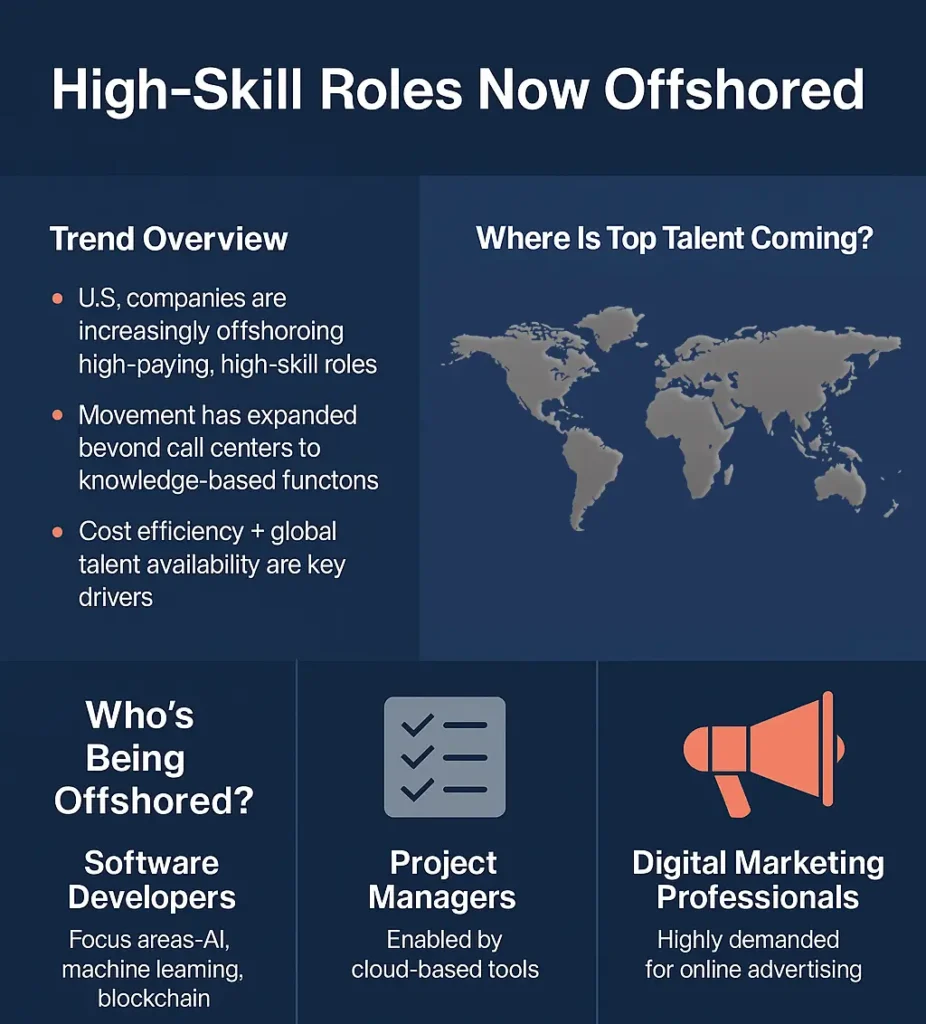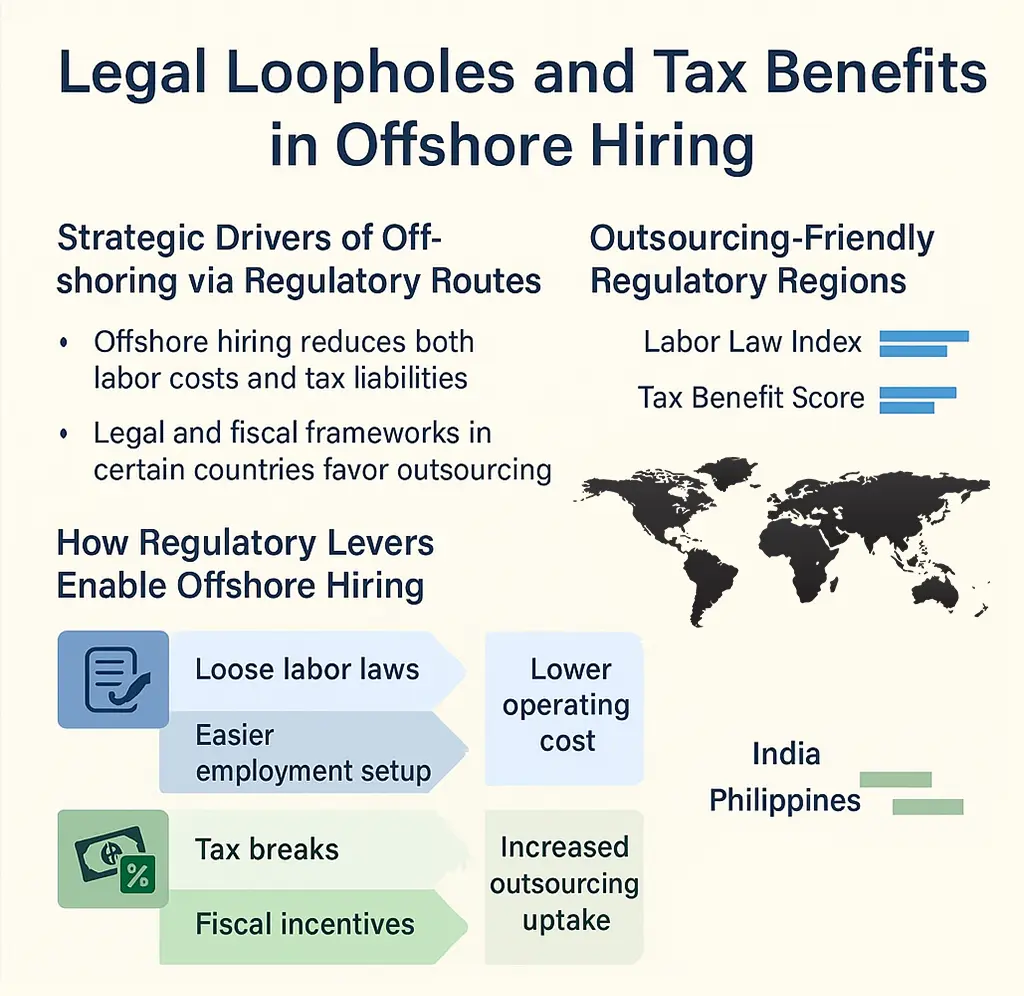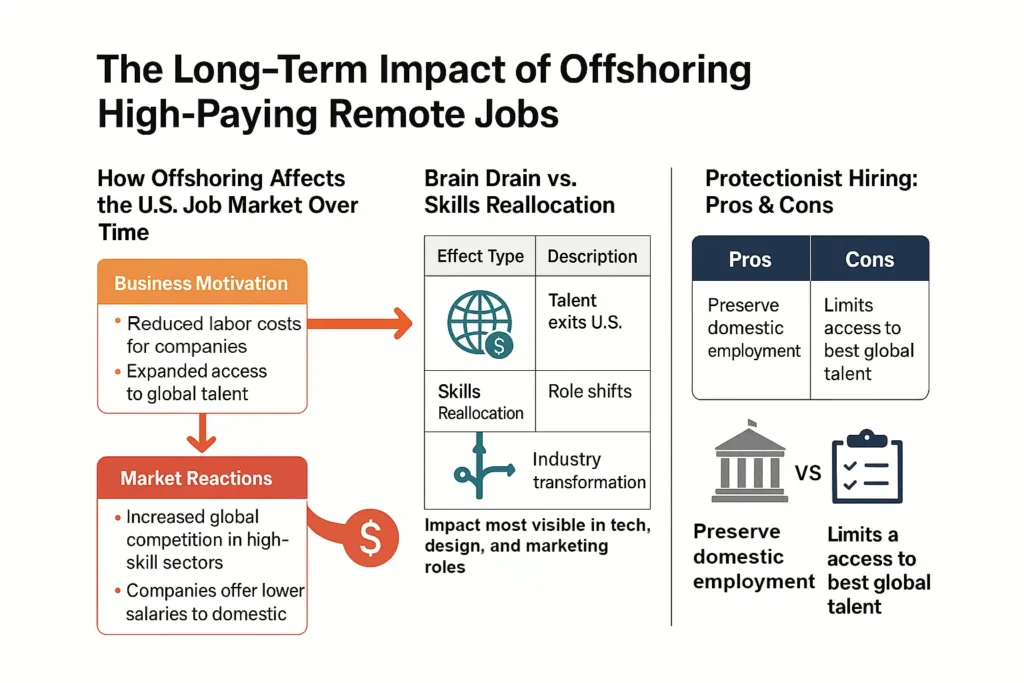A Complete Cost Breakdown
Remote work was once seen as the great equalizer — a means of empowering local economies and of connecting people to jobs located in their own backyards. Yet, while the practice of remote work expands, a trend that few forecast is taking shape: Companies in the United States are offshoring high-paying remote work. This sudden shift is posing questions about the future of home-based jobs and the shifting dynamics of a global workforce.
The conventional wisdom was that the expansion of remote work would open up new opportunities for American workers, especially in fields like tech, marketing and design. But many companies are opting to outsource these jobs to workers overseas, who can be paid as little as pennies on the dollar. This article will delve into what is driving this movement, what functions Jobs are being offshored, the economic basis for this trend and what it may mean in the long-run to U.S. workers and global business strategies.
| Role | U.S. Salary (Avg.) | India Salary (Avg.) | Philippines Salary (Avg.) |
|---|---|---|---|
| Software Developer | $120,000/year | $20,000/year | $15,000/year |
| Digital Marketer | $75,000/year | $10,000/year | $8,000/year |
| Graphic Designer | $60,000/year | $10,000/year | $8,000/year |
| Project Manager | $85,000/year | $15,000/year | $12,000/year |
This table highlights just how much U.S. companies can save by outsourcing roles that would traditionally command high salaries in the U.S. By offshoring, companies can reallocate their budget towards growth initiatives, R&D, and other business operations.
But offshoring also enables companies to cut costs beyond savings on wages. For example, organizations can optimize their teams based on time zone benefits. Global teams support 24/7 work cycles, helping to accelerate and expedite projects.
The exchange rate is a major factor contributing to the offshoring trend. By paying workers in countries whose currencies are weaker than the dollar, companies capture something like an arbitrage premium: They get more bang for their buck than by paying U.S. workers. This enables companies to come down in price and still retain output quality.

Originally, offshoring involved moving relatively low-level work, like customer service and data entry positions. But as remote work has proliferated and technology has improved, the trend has broadened to include high-skilled positions in fields like software development, marketing and design.

Even more shocking is the offshoring of some traditionally high-paying, high-skill positions. Now U.S. businesses are exporting jobs not just in call centers but in such skills as digital marketing and software development and are even farming out project managers and graphic designers. Some businesses are even relocating entire development teams overseas as they seek to cut costs while still having access to the best talent.
Here are some of the high-skill roles that are increasingly being offshored:
The challenge with offshoring high-paying jobs is whether companies can achieve the same level of work at a lower cost. Yet, there are many skilled and experienced professionals from abroad who offer equivalent experience and expertise to those found in the US.
Countries such as India and the Philippines have become leaders in the global industry of tech talent, with universities and training programs that churn out highly skilled workers. The bottom line is that many workers in emerging markets do not mind going through continuous up-skilling to be able to compete in the global job market. The growth of online learning platforms means workers in developing countries can keep up with industry trends, rendering them competitive.
Global talent platforms — like Toptal, Upwork and Fiverr — have made it easier for companies to hire skilled workers abroad. These networks enable businesses to tap-into pre-screened expertise from around the globe, guaranteeing a quality no-hassle hire every time. Likewise, tools conceived for remote hiring such as GitHub, Jira, and Slack enable seamless collaboration while keeping your overseas teams integrated and productive.

Meeting the offshore challenge also demands new tools and ways of doing things. Thankfully the development of project management, communication, and collaboration tools have made it simpler than ever for organisations to coordinate work with remote teams, regardless of where they are based:
Project Management Tools
Services such as Trello, Asana and Monday. com let companies assign tasks, set deadlines and monitor progress from anywhere in the world. These programs provide a clear process that enables managers to monitor staff working on different time zones.
Time Tracking and Performance Management
Time-tracking software, such as Harvest and Toggl, helps companies keep tabs on how remote employees are spending their time, making sure workers are productive and accountable. Other tools for performance management like 15Five and BambooHR also let companies follow employee performance and make sure everyone’s aligned with company goals.
Virtual Onboarding and Collaboration Platforms
There are also now companies, like WorkBright and BambooHR, specializing in virtual onboarding, making it even easier to onboard remote team members, even included if they are located outside the U.S. Today, tools like Slack and Zoom have enabled you to communicate with your teams in real time, meet and collaborate smoothly despite distance.

Sending high-paying jobs overseas also provides companies the opportunity to exploit legal and tax privileges in ways that reduce both labor costs and tax obligations. Countries that have less stringent labor laws and lower levels of taxes make them ideal for outsourced labor.
Though outsourcing offshore is often the cheaper option, it is not without its hidden costs. Such challenges are ignored when financial gains are made the sole institutional priority.
Communication Barriers and Time Zone Challenges
Communication gaps are one of the biggest challenges of offshoring. Time zone discrepancy can cause delay in communication making decision making slower and delay in project latter. Moreover, the barrier of language and cultural dissimilarities can hinder a team from working in unison.
Cultural Mismatches and Team Cohesion
Remote teams can also face cultural clashes. Canceled Such in-person relationships can help build trust and camaraderie among teams. Organizations need to develop strategies for building camaraderie in a distributed work force to avoid such problems, experts say.
Data Security and Intellectual Property Concerns
There is definitely a risk, when sending work overseas, of data security and intellectual property protection. Without proper precautions, companies can face data breaches, having intellectual property stolen, or breaking privacy laws.

The trend of offshoring has left much of the U.S. workforce frustrated, as workers believe that their job opportunities are being displaced by workers in other countries, who are paid far less. A lot of American professionals are worried about job security as companies continue to pull from a global talent pool.
Real Stories from Laid-Off Professionals
A number of U.S. workers have told such stories about being laid off or replaced by foreign workers. These workers feel like they have been replaced by cheap foreign labor.
The Emotional and Economic Toll on American Workers
The emotional cost of job loss may be especially high when workers believe their livelihoods are being stolen by cheaper labor abroad. The loss can be even greater when you consider that these shareholders are often unable to find another job locally — there is a lot of high unemployment in the scene on an international level for high paying jobs.
Although cost savings are the main driver for offshoring, many business leaders insist that offshoring is not just about dollars. The message from CEOs and HR leaders is that we must hire the best talent, no matter where they are.
Balancing Profit with Responsibility
Leaders with manufacturing plants must have to weigh the bottom line with their commitment to local workers. The bottom line for offshoring is financial, yet more companies are beginning to see the value in offering U.S. workers a chance, too.
Global Growth vs. Domestic Loyalty
Globalist pressures take precedence over domestic fealty for some leaders now that companies are scaling up and thinking more globally. But it can be a risky one for a company’s reputation as it looks as if profit has been prioritized over job security for local workers.

The implications for the U.S. job market of moving high-paying remote jobs offshore will be complex in the long run. And while it reduces costs for companies and expands the pool of global talent, it brings the potential for wage suppression and the disruption of career paths for American workers.
Wage Suppression and Career Path Disruption
The U.S. job market could suffer wage compression in some sectors, as more jobs are outsourced overseas. Nowhere is this more relevant than for jobs that demand highly skilled labor, in which competition with global talent means that companies can pay lower wages to U.S. workers.
Brain Drain vs. Skills Reallocation
Offshoring can also bring about the brain drain — the exodus of highly skilled workers from the U.S. to seek other countries where they have more and better opportunity. Or it could result in skills reallocation, as U.S. workers are forced to transition to different jobs or industries when well-paying jobs are offshored.
Protectionist Hiring Policies
One potential reaction to the offshoring trend: protectionist hiring policies in which governments mandates rules favoring native hiring over global talent. These policies might help save American jobs, but could also restrict access to the best talent globally.
The question at this point is, can the trend of offshoring high-wage jobs be reversed, or is this the new normal? Others predict that offshoring will increase under pressure of global competitive forces and the need of companies to reduce costs. Others say that with changes in policy, reskilling efforts and different economic incentives, these jobs can again be created in the United States.
To turn the tide, American workers might need to learn new skills and ramp up in new technologies and industries. Policy shifts and economic incentives, including tax breaks for companies that hire domestically, could also incentivize companies to bring jobs to the U.S.
Even if the tide turns, the fact remains that global cooperation may well be here to stay. Companies will still be looking for the best talent, whether it’s down the street or on the other side of the world.
The move to offshoring relatively well-paid remote jobs is part of a new world of work in which geographic conditions no longer dictate where talent can be located. Although this trend brings many benefits for organizations, it also presents serious challenges for workers and organizations. The way to thrive in this new world of work is to adjust to global talent economy, accepting the risks and opportunities involved; and, to figure a way to balance global growth with local job security.
As the world of work rapidly changes, US workers need to evolve to keep pace with global job markets. Below are tips on how to remain relevant:
Join thousands of businesses leveraging offshore staffing to scale their operations globally
Expand effortlessly with My Offshore Employees - access top 1% offshore talent starting at just $3/hr or $600/month per FTE. No hidden fees, no compromises on quality. Your offshore employees work exclusively for you - ensuring focus, transparency, and real-time visibility into your projects. We combine smart automation and proven industry experience to deliver higher productivity, fewer errors, and tailor-made solutions for your business growth.
© 2025. All Rights Reserved.